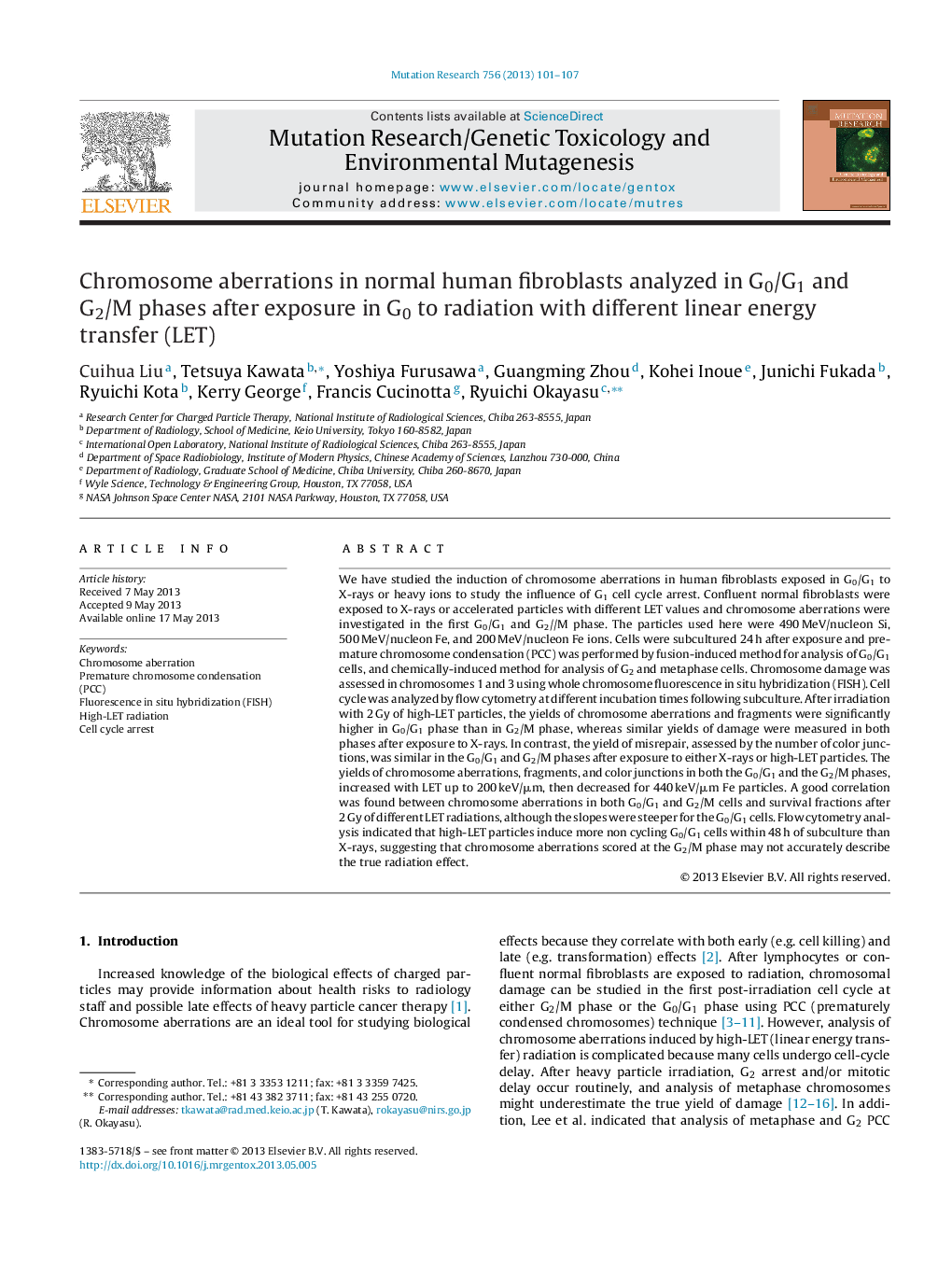| Article ID | Journal | Published Year | Pages | File Type |
|---|---|---|---|---|
| 8456507 | Mutation Research/Genetic Toxicology and Environmental Mutagenesis | 2013 | 7 Pages |
Abstract
We have studied the induction of chromosome aberrations in human fibroblasts exposed in G0/G1 to X-rays or heavy ions to study the influence of G1 cell cycle arrest. Confluent normal fibroblasts were exposed to X-rays or accelerated particles with different LET values and chromosome aberrations were investigated in the first G0/G1 and G2//M phase. The particles used here were 490 MeV/nucleon Si, 500 MeV/nucleon Fe, and 200 MeV/nucleon Fe ions. Cells were subcultured 24 h after exposure and premature chromosome condensation (PCC) was performed by fusion-induced method for analysis of G0/G1 cells, and chemically-induced method for analysis of G2 and metaphase cells. Chromosome damage was assessed in chromosomes 1 and 3 using whole chromosome fluorescence in situ hybridization (FISH). Cell cycle was analyzed by flow cytometry at different incubation times following subculture. After irradiation with 2 Gy of high-LET particles, the yields of chromosome aberrations and fragments were significantly higher in G0/G1 phase than in G2/M phase, whereas similar yields of damage were measured in both phases after exposure to X-rays. In contrast, the yield of misrepair, assessed by the number of color junctions, was similar in the G0/G1 and G2/M phases after exposure to either X-rays or high-LET particles. The yields of chromosome aberrations, fragments, and color junctions in both the G0/G1 and the G2/M phases, increased with LET up to 200 keV/μm, then decreased for 440 keV/μm Fe particles. A good correlation was found between chromosome aberrations in both G0/G1 and G2/M cells and survival fractions after 2 Gy of different LET radiations, although the slopes were steeper for the G0/G1 cells. Flow cytometry analysis indicated that high-LET particles induce more non cycling G0/G1 cells within 48 h of subculture than X-rays, suggesting that chromosome aberrations scored at the G2/M phase may not accurately describe the true radiation effect.
Keywords
Related Topics
Life Sciences
Biochemistry, Genetics and Molecular Biology
Cancer Research
Authors
Cuihua Liu, Tetsuya Kawata, Yoshiya Furusawa, Guangming Zhou, Kohei Inoue, Junichi Fukada, Ryuichi Kota, Kerry George, Francis Cucinotta, Ryuichi Okayasu,
